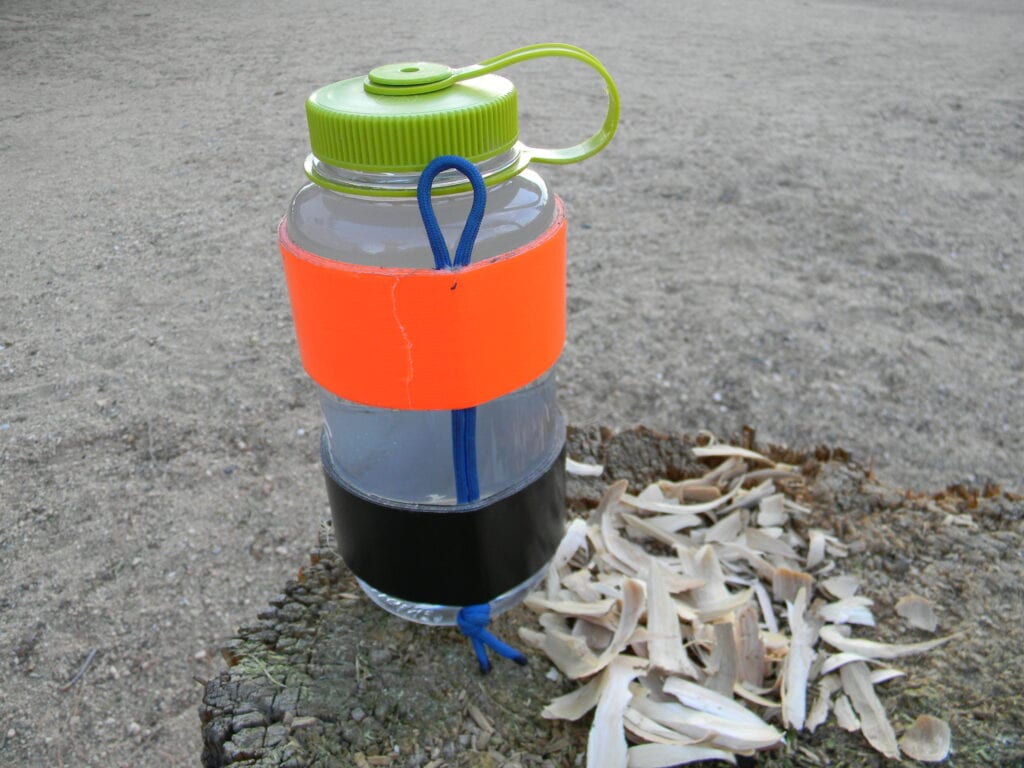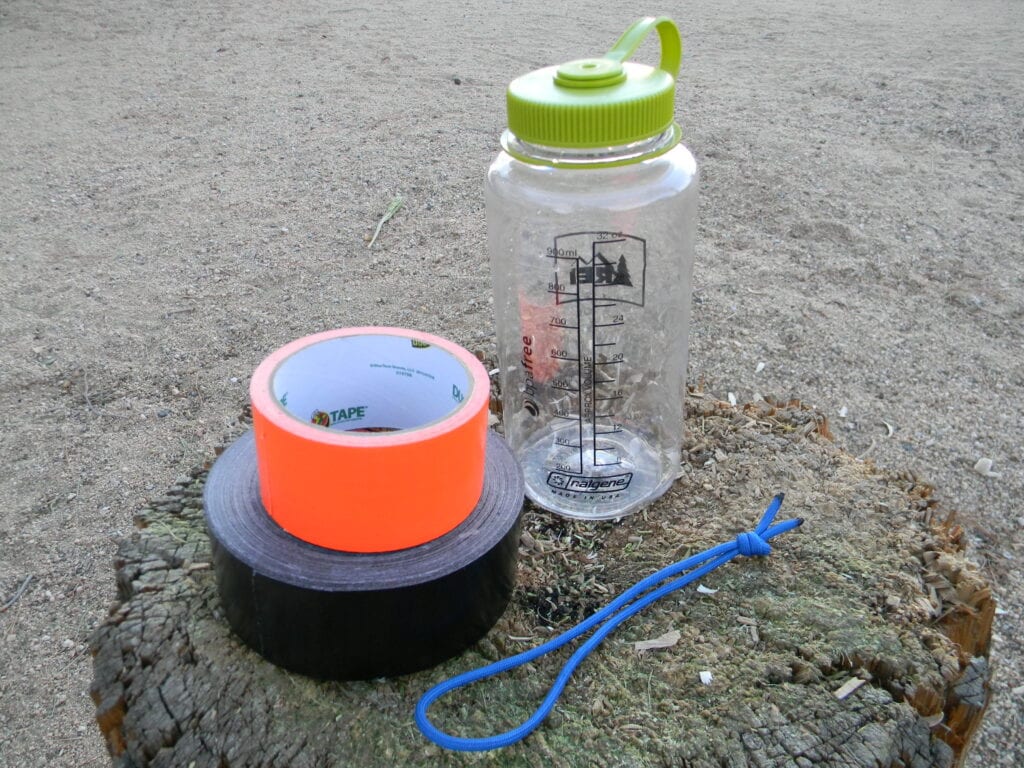WATER IN THE DESERT


We all know the desert is a land of extremes. High temperature by day, frigid low temperature by night, dust storms, lack of vegetation, plants that poke, insects that sting. There is one more threat that is by far one of the greatest. That is the lack of water; if there was a steady amount of water the landscape would look completely different and would not be called a desert. In this section we are going to discuss multiple ways in how to track, find a locate water. First lets discuss the common misunderstandings many books state. The most common myth is, ” the rules of three “. Regarding water many authors will state you can last three days in the wild without water. So is there truth behind that? The answer is to an extent it is in fact true in an ideal environment. However, there is nothing ideal about the desert. With extreme heat, high temperatures, a lack of shade, and the lack of water one can very easily fall into dehydration in a matter of two hours or less. The other myth is drinking your own urine. That is a terrible idea, and can be extremely dangerous. So why is it not recommended one might ask? Well, urine has a sodium content thus setting you further into dehydration if consumed; and urine is a toxin the body wants to get rid of. So do not drink it. Ignore the TV shows and books that recommend doing so. The last myth is picking up a dry stone and sucking the moisture from the stone. That alone is almost laughable in the desert. The reality is, in the desert there will not be any moisture in stones unless it has been emerged in water for a long period of time, even then the water will evaporate. One thing placing a reasonable sized stone will do is, cause your mouth to salivate to a small extent. Even then you are still not replacing water loss. So there are a few common myths you need to understand before venturing into the desert. An few important rules to follow are drink before you are thirsty it will save you in the long run, and stay hydrated to the point where your urine is clear in color. Lets now discuss a few ways to find and locate water in the desert.
VEGETATION – Any time you find large deciduous trees such as cottonwood, CA fan palm, willows, and sycamore there is water in the area. Other plants such as Cattail, mulefat, Wild Grape, amongst others are not only signs of water but are very useful plants in the wild. Knowing the vegetation is critical. In addition when there is a significant amount of water such as a creek you will find a green belt- meaning heavy foliage growing around the the creek. So when faced with the common threat of dehydration I highly recommend traveling the high ground to overlook the valley floor; if you find a green belt its well worth traveling and setting up your camp around the generalized area.
POCKETS AND CRACKS – Checking natural cracks and indentations in and around exposed bedrock is worth checking wile when facing the extreme threat of dehydration; this is the most common way to find and locate water in Joshua Tree. However, this method can be extremely difficult to locate water due to the fact you will not find heavy foliage around the water pocket. The reason for this is the amount of boulders and the lack of rich soil. When searching for water this way keep your eyes and ears open. Listening for frogs, and looking for insects such as bees, wasps, and dragonflies is the key.
GAME TRAILS – This is overlooked but very important. In Joshua Tree’s desert chaparral it is extremely rare locating water due to the fact there are not many large rocks that form natural pocket, and something called evapotranspiration the rapid pace of evaporation. Looking for a heavily used game trail such as big horn sheep, coyote, mule deer etc can be difficult, but life life saving; and usually it always leads to collected monsoon rain water. Understanding the behavior of the animal, what direction the animal is traveling, and what the animal is after are all important factors. For this method of locating water I highly recommend seeking proper training in animal tracking.
COLLECTING WATER – You should always come prepared when in the desert. With the proper gear and training you can improvise and modify certain items to your specific need. One item is a tarp, by simply stringing your tarp on all four corners and forming a pocket below you can catch a great amount of water during a rain storm, the larger the tarp the better. It is also important you collect rain water using a tarp that will not release toxic chemicals when water settles on it. Below is a demonstration on collecting rain water using a tarp.
Another great modification is regarding a nalgene bottle. Author and wilderness living skills instructor Cody Lundin writes about this in his book, ” 98.6 degrees: keeping your ass alive”. Simply using Duct tape, and a piece of 550 cord is all you need. Trace down the two tag ends on the cord; then form a figure eight knot. Place the cord on the nalgene bottle with the knot towards the bottom of the bottle. At this point you want to wrap the loop in two places with your tape. One up towards the top of the bottle, the other towards the bottom of the bottle next to the knot- I recommend resting the knot on the bottom of the tape so it can not slide and it has something to grab onto. This serves many purposes. You have a container, you have tape if needed, and last you can now lure the bottle down in a well, a crack, or a pocket of water safely without risk of injury. This is a must out in Joshua Tree where water can settle at the bottom of a boulder.
From left to right: On the left you can see the materials needed for this project. On the right, the project is complete. It is important to make this modification before entering the field.
WASH BEDS AND DIGGING FOR WATER: Many times you will come across a dry wash bed. Along with the others it is important to search for water in a wash bed due to the water that flowed and flooded through, you might be able to find water that has settled in one location. If you find a dry wash with heavy green vegetation along the sides your chances are that much greater. The first thing you want to do is keep your eye open for exposed bed rock; if found check the pockets and cracks for water. Another important factor is looking for low points in shaded areas. If there are signs of moisture it is well worth digging to see if water will flow to the surface. In addition to digging, if you do not find water after digging two feet move on to the next low point or elsewhere.
THE VIDEO BELOW DEMONSTRATES MULTIPLE WAYS TO LOCATE AND TREAT WATER IN THE DESERT
In conclusion, water is the essence of life; without it you will die. Unlike many areas in the world the desert lacks life saving water. So it is important to take the following steps
1. Come prepared: If you are venturing into the desert by vehicle bring at least 5 gallons of water with you. If you are hiking or adventuring bring plenty of water in your pack
2. Field courses: Learning how to locate water is not easy. It is much easier said than done. Enroll in a few field classes on how to locate water in the desert with a local instructor. make sure the class you are taking is hands on. Its equally important to make 100% sure you can trust your life in their hands.
3. Dirttime: Get out in the environment and learn how to treat water by boiling or by chemical disinfection. It’s one thing to locate water, but its another to know how to disinfect water. Water that is untreated can kill you, so take extreme precaution when practicing these skills. In survival, if you locate water and you have absolutely no means of treating it drink it anyways. It is better to be found alive and sick than found dead from dehydration


